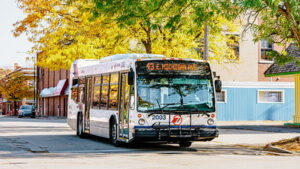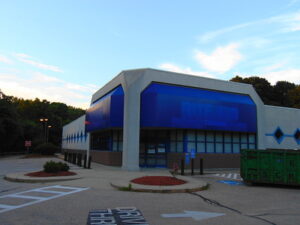Bridge Michigan ran an interesting story last week about the City of Ecorse and its efforts to revitalize a former US Steel site. US Steel had been both Ecorse’s major employer and its major tax revenue generator. In 2020, the company laid off three-fourths of its Ecorse-based employees. That left a massive hole in the city’s budget and reignited interests in building plans for another US Steel-related property.
Nearly 20 years ago, the city bought a brownfield property known as the Mill Street Property, from US Steel for $2M. The city had a plan to sell abandoned steel on the property to fund its redevelopment. But, of course, that didn’t pan out. The property has been vacant since that time. Previous redevelopment efforts have stalled. The latest plan involves offering the space as potential new warehousing. The city hopes to take advantage of demand for space being driven by the “reshoring” of manufacturing.
The fact that the property has been vacant and on the city’s books for the last two decades means that the city has not realized any tax revenues from its property investment strategy. It also means that any jobs that might have come from selling the property back to a private owner have not materialized. That’s left the City of Ecorse substantially worse off than it might otherwise have been had it not purchased the property.
The situation is somewhat like the City of Ypsilanti’s Water Street development. In that case, the City of Ypsilanti purchased land for development that never happened. That purchase very nearly sank the City’s general fund. Ultimately, the voters of Ypsilanti provided a bailout that helped the City avoid bankruptcy.
Beware building plans
I’m not sure what the fascination is with taxpayer-funded construction projects, but they seem to have a poor track record. Often, the culprit is not circumstances, bad luck, or bad timing. It’s a fundamental misunderstanding of (or unwillingness to look clearly at) the risk involved in the plan. Every “investment” a public body makes involving speculative building plans opens it to unfamiliar risk factors.
I have said before that public employees are simply not well versed in the realities of speculation and risk. Speculative building plans – those in which the goal is revenue generation – are not like other municipal construction projects. The point here is simple. Things rarely turn out in real life the way they do on paper. That makes speculative building plans exceedingly dangerous for public entities. WCC currently has two speculative building plans in process: the “Advanced Transportation Center,” which is stalled for lack of state funding; and the “mixed use development” the Board inserted into the Master Plan.
It’s very easy to bet other people’s money. Neither of these projects have any mission-related value to WCC, yet the WCC Board of Trustees is willing to gamble on the financing for these dogs. In the same way the City of Ecorse gambled on its Mill Street Property, and the City of Ypsilanti gambled on Water Street.
The question regarding speculative building plans remains for WCC’s Board of Trustees: What happens when you roll the dice and lose?
Photo Credit: David Lofink , via Flickr

























